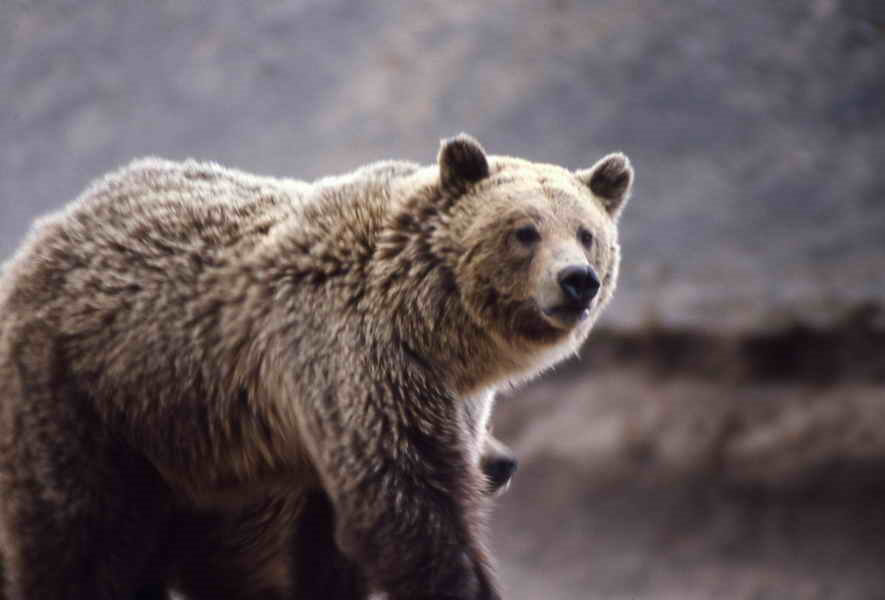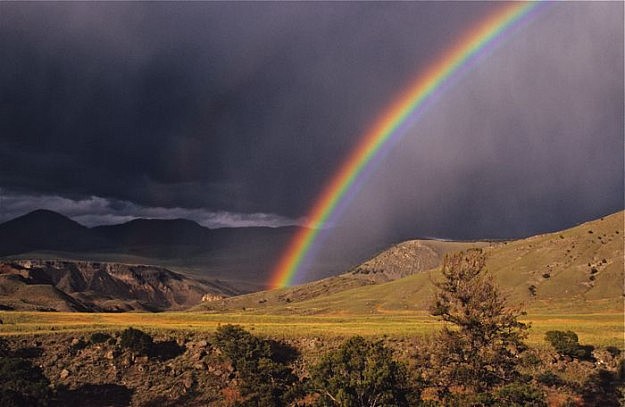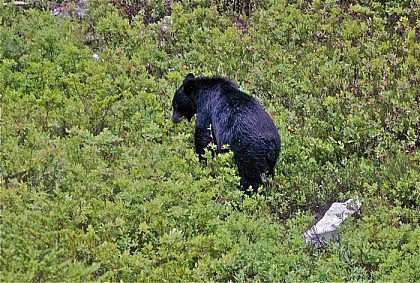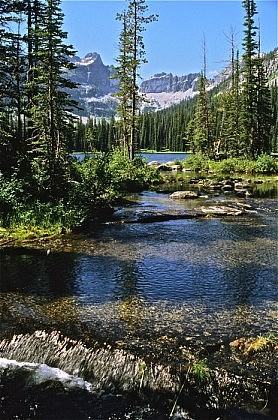 Many of western North America’s remaining wildlands support black bears, grizzlies or both. Black bears are primarily forest animals, while grizzlies are generalists that thrive in forests, tundra, grasslands and many other habitats. Bears are absent from the American deserts, with a few exceptions.
Many of western North America’s remaining wildlands support black bears, grizzlies or both. Black bears are primarily forest animals, while grizzlies are generalists that thrive in forests, tundra, grasslands and many other habitats. Bears are absent from the American deserts, with a few exceptions.
Grizzlies are a “wilderness dependent species”, and during the last two centuries their numbers have plummeted. Today there remain just over one thousand grizzlies in the lower 48 states, mostly in the Greater Yellowstone and Glacier Park-Bob Marshall Wilderness ecosystems of the Rocky Mountains. Prior to European settlement, there may have been roughly one hundred thousand grizzlies in what are now the lower 48 states, from Mexico to Canada and from the Pacific nearly to the Mississippi. There are still lots of grizzlies in Alaska and in parts of western Canada.
Because black bears evolved in the forest, they became furtive and learned to use tree cover to escape danger. In contrast, grizzlies evolved in more open landscapes and developed more aggressive tendencies. All bears can be dangerous under some circumstances, and all black and grizzly bears are opportunistic omnivores that can locate and digest an amazingly wide variety of plant and animal matter.
For many of our first-time clients, the burning question at the beginning of their trek is, “What about bears?” That’s understandable. Yet the truth is that bears rank well down the list of ways to meet one’s demise in the wilderness. Falling, drowning and insect stings are much more likely to befall us, not to mention that driving to the trailhead on any U.S. Highway poses far more danger than bears.
Yet when a bear injures someone, it’s headline news. And why not? Just the thought of being injured or killed by a large carnivore awakens a primordial fear within us, regardless of the monumental odds against it happening. And it sure sells more newspapers than another traffic accident or drowning.
Still, the statistical odds against being injured by a bear, even in the heart of grizzly country, are literally in the tens of thousands to one range. When group members take all of the proper precautions, their odds are even better. Solo hikers are at greatest risk, and there’s never been a bear-related injury or death in a group of over 6 in the entire history of Yellowstone and Glacier National Parks.

Add a professional guide with lots of experience in bear country to this statistical stew, and we begin to see that bears should not keep you awake at night! All of our guides are bear aware and experienced. For example, Big Wild guides have had encounters with well over 200 grizzlies in the wilds. Few people outside of bear research biologists can match that experience.
Nonetheless, we would be remiss to ignore the reality that on rare occasion, bears do attack people. To surprise a sow with cubs – especially a grizzly — or to approach a carcass that may be claimed by a grizzly are exceptionally dangerous actions. Other time-proven ways to get into bear trouble include being sloppy with food, intentionally approaching a grizzly for a photo, or camping in an intrinsically dangerous location. We assiduously avoid these scenarios on Big Wild treks.
In fact, we have a time-proven set of procedures that we religiously follow in order to increase your safety. It begins by providing you with clean equipment, unsoiled by food odors (never bring food into a tent!). We will teach you how to be safe in bear country, which begins at the pre-trip safety talk. That’s when your guide will effectively explain the difference between the two species, how to react in an encounter, and other specifics that will help you to avoid close encounters of the worst kind. We have it covered!
Pepper spray is the proven effective defense against a charging bear. We have never had to defend ourselves with it, but it has proven to be safer for the user and more effective against bears than firearms, not to mention less harmful to the bear. We provide state of the art pepper spray to all of our clients for treks into grizzly country, and we provide instructions on how/when to use it.
In many ways, bears symbolize real wilderness, the big wilds of the big outside that we at Big Wild Adventures enjoy sharing so much with our guests. No, there’s nothing wrong with a little bit of primal fear, and we recommend that everyone bring a great deal of respect and humility to the wilds of the Great Bear. But there’s no need to be paranoid. When you’re with a Big Wild professional you’re with the best. On most any given trek, we’re lucky to catch a glimpse of one of these magnificent beasts, and usually when we do, what we see is a bear on the run. When we watch a bear in the wild, it’s an image that we don’t soon forget. In many ways it’s the essence of real wilderness, and in some primordial way it’s a living reminder that we two-leggeds are still a part of nature, not something apart from it.
So enjoy. Sleep well under a Rocky Mountain star-studded sky. Soak in the sunsets and rainbows. And may we have many more bear sightings deep in big wilds of the American West.



